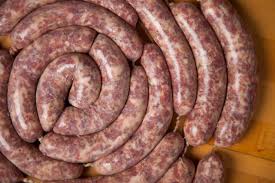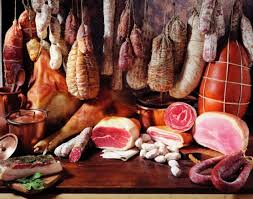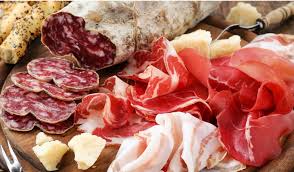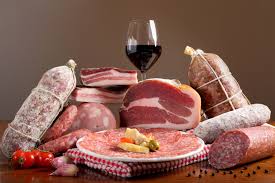Spectacular Italian Salumi – How its Made
Spectacular Italian Salumi
How its Made
*
Making Italian Sausage & Salumi is an art form. Making it is a logical outcome of efficient ancient butchery.
Traditionally, sausage makers would salt various tissues and organs such as scraps, organ meats, blood, and fat to help preserve them. They would then stuff them into tubular casings made from the cleaned intestines of the animal, producing the characteristic cylindrical shape. Hence, sausages, puddings, and salami are among the oldest of prepared foods, whether cooked and eaten immediately or dried to varying degrees.

Early humans made the first sausages by stuffing roasted intestines into stomachs. The Greek poet Homer mentioned a kind of blood sausage in the Odyssey. Epicharmus wrote a comedy titled The Sausage, and Aristophanes’ play The Knights is about a sausage-vendor who is elected leader. Evidence suggests that sausages were already popular both among the ancient Greeks and Romans. Most likely popular also with the various tribes occupying the larger part of Europe.

The most famous sausage in ancient Italy was from Lucania (modern Basilicata) and was called lucanica. This is a name which lives on in a variety of modern sausages in the Mediterranean. During the reign of the Roman emperor Nero, sausages were associated with the Lupercalia festival. Early in the 10th century during the Byzantine Empire, Leo VI the Wise outlawed the production of blood sausages following cases of food poisoning.

The word sausage is derived from Old French saussiche, from the Latin word salsus meaning “salted”.

In Italy, the basic distinctions are:
Raw sausage (salsiccia) with a thin casing
Cured and aged sausage (salsiccia stagionata or salsiccia secca)
Cooked sausage (wuerstel)
Blood sausage (sanguinaccio or boudin)
Liver sausage (salsiccia di fegato)
Salami (in Italy, salami is the plural of salame, a big, cured, fermented and air-dried sausage)
Cheese sausage (casalsiccia) with cheese inside
From Wikipedia
Join Joanne and Frank on Facebook at
Everybody Loves Italian
and
Visit us on the web at dev.everybodylovesitalian.com



